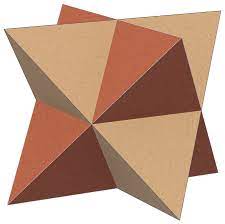Activating learning is a very important concept for educators and students. From a student’s perspective, almost every academic success, which I achieved before, involved active learning. I remember when I was a middle school student, I was really good at math and geometry. I have the ability to simulate every geometry shape in my head before I do the calculation for surface and volume. On the day of learning tetrahedra, I suddenly find a geometry structure which I cannot simulate in my head. It was a compound of two tetrahedra.

I didn’t know what the shape looks like. However, I did know how to make it by my hand. I made a paper model and the outcome is as stable as a square. I was so proud of myself at that time, this self-activity really stimulated my passion for learning geometry. Until today, I can finally tell that this reflects Bloom’s Taxonomy at a “creat” level. I learned the skills and methods; I applied that knowledge to create a new shape that nobody image before.
From an educator’s view, I need to design a structure that students can engage in and interact with it. If I just let them read and remember everything, the efficiency is low and they might get confused especially when there are many terminologies. Think about this scenario, I’m now teaching some middle school students irrational numbers. How can they easily understand the meaning? They need to connect the new concept to their existing math ecosphere and also distinguish the difference between them.
The upper section is a mini-slides I made for the learning activity, including warm-up section and new idea. Then students will use their own knowledge to connect and rebuild their math system with this mini drag-drop game.
For multimedia evaluation, I want to evaluate my personal data visualization, in SECTION models, as a sample of the media – video. This video will be used to teach students data representation in a creative way with information visualization skills.


bradeneng 26 March 2023
Hi Jasper! Your example of solving the two tetrahedra through paper craft is a great way of how active learning makes complex problems more “step-by-step” in a way. That’s how I think about it at least. It gets out of your head and can be understood by it’s different parts.
And please, never stop with all that activity you’re putting into those slides! I enjoyed that you added the “sort it out” segment. Thank you for the post 🙂